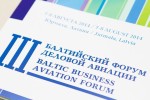Etiquette of Airspeak
While writing so many articles we have focused on piloting skills: its building, improvement, sustainability, expansion and many more things. But we have rarely ever written about the pilot communication, its importance for safety and how young student-pilots go about learning the correct form of communication between other pilots and Air Traffic Control.
What is Airspeak?
According to Tom McArthur who released Concise Oxford Companion to the English Language, Airspeak is a restricted language which establishment was initiated by International Civil Aviation Authority in the aftermath of the Second World War. Airspeak was developed to make communication between pilots and air traffic control as unambiguous as possible. What it means is that speech cannot be too dense, it can only use English grammar, vocabulary and pronunciation along with the technical and specialized terminology. Any conversation that is not relevant for the flight is forbidden in the cockpit, therefore, international agreements and training procedures ensure that all pilots are trained in English and follow the cockpit communication rules.
How is Airspeak taught in the classroom?
The classroom for teaching Airspeak requires a special setting. It must be equipped with headset for each student and good quality sound system. The program that is used by the Airspeak instructor usually varies, but the most popular tool used until this day is F. A. Robertson’s “Airspeak. Radiotelephony Communication for Pilots”. The book is prepared in a logical chronology of the flight starting from pre-flight, departure, ATC clearances, startup, pushback and going all the way to final approach, landing and after landing routines. Every stage of the flight has its routine and non-routine phraseology which pilots must know, understand, be able to act upon, and read-back.
Developing Airspeak skills
In order to achieve the highest radiotelephony communication efficiency, every student-pilot is encouraged to develop their own understanding, abbreviations and style for writing down the dialog facts. This becomes especially handy when communication becomes very detail and involves such phrases as: “Metar Praha, 14.00 GMT. Wind 080°, 1 m per second, visibility 5000 m, snow showers, clouds I okta 240 m, 5 oktas 450 m, temperature 0, dew point – 1, QNH 1032, no sig, runway 13 damp up to 100%, braking action good, runway 07 damp up to 100%, braking action good”. This is when student-pilots must develop their own shorthand writing which can involve abbreviations, signs, arrows, and any other symbols that are universally known or developed personally.
The other key point in Airspeak is memorization of the non-routine phraseology which is not used so often, but must be in the back of every pilot’s head if the need for it arises. Such phrases involve MAYDAY or PAN expressions and can be followed by a long list of information for the air traffic control, such as: MAYDAY, MAYDAY, MAYDAY, BAA Training 822, there is depressurization, we are making an emergency descent to FL25, heading to Overby for emergency landins.
Where will you use it?
The simplest answer to this question is – everywhere! And this is not a joke. Airspeak is an integral part of pilot training and it is visible (or hearable) in every step of the flight training. Every second of the flight requires proper airspeaking skills and it is evident right from the beginning if the student is well prepared, or is lacking basic knowledge of aviation communication. Then student is definitely going to need it during the examination at CAA and most importantly – ICAO English language testing.
And since there can be discrepancies or incidents happening during the flight, pilot communication and ability to portray correct, clear, and timely information is absolutely vital in aviation. Since there are procedures for all the happenings during the flight, what pilots must be able to do is communicate correctly with one another, inform air traffic control of their situation, take down any information or solutions given by the ATC, and act upon it in a calm manner.
Knowing it by heart
So if you are planning to be a pilot, or are becoming one right now, a number of aviation airspeak phrases will have to live in your head forever, even if you are woken up in the middle of the night. Effective communication between pilots, cabin crew, flight dispatchers, air traffic controllers are the key to safe and efficient flights. The only way to achieve this effective communication level is through rigorous practice, always sticking to the communication rules and regulations, and informing others that they should do the same. Stay connected, and stay safe!
Source: BAA Training
Publishing or copying the content of AVIATION Times without a written electronic permission is strictly forbidden. If you have any information, tips, videos, photos or your press releases for us contact us at news@aviation-times.aero.
AVIATION TIMES © Copyright 2012 - 2025








